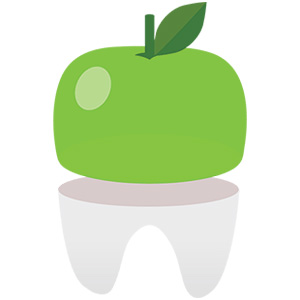At Fresh Orthodontics in Park Slope, crowded teeth are one of the most common reasons patients visit our orthodontist, Dr. Ankush Khanna.
Crowding happens when there isn’t enough space in the jaw for the teeth to sit in their ideal places. Instead, they may twist, overlap, or erupt at unusual angles.
While many people think of teeth crowding as a cosmetic issue, it’s actually a type of malocclusion (bad bite) that can affect your oral health, bite function, and confidence.
In this post, we’ll cover what causes crowded teeth, how to recognize the signs, and the available treatment options.
What is Teeth Crowding?
Teeth crowding, also known as dental crowding, occurs when the jaw is too small or the teeth are too large to fit in alignment. As a result, teeth compete for space and can become rotated, misaligned, or overlapped.
Common signs and symptoms of crowded teeth include:
- Overlapping or twisted teeth
- Teeth growing at odd angles
- Teeth that erupt in the wrong place (i.e., the canines coming in above the rest of the teeth)
- Tight spaces that make flossing difficult and lead to plaque buildup
- Noticeable misalignment when smiling
- Crowded bottom teeth or crowded top teeth that affect bite balance
In cases of severe teeth crowding, the misalignment can cause jaw discomfort, interfere with speech, and lead to cavities and gum disease.
What Causes Crowded Teeth?
Several factors can contribute to crowding teeth, including:
- Genetics: Patients may inherit a small jaw size or large tooth size from one of their parents. You can also inherit a small jaw from one side of the family and large teeth from the other.
- Early loss of baby teeth: When primary teeth, or baby teeth, fall out before their natural time, the surrounding teeth shift into the open spaces, which blocks the underlying permanent teeth from erupting into the correct positions.
- Late loss of baby teeth: The opposite can also be true. The delayed loss of baby teeth can prevent the permanent teeth from coming in at a proper angle.
- Habits like thumb-sucking or prolonged pacifier use: While most kids stop these habits on their own, when thumb-sucking, pacifier use, or tongue thrusting (reverse swallowing) is vigorous and/or continues past the toddler years, it can disrupt jaw development and cause the palate to narrow.
- Late jaw growth: When permanent teeth erupt before the jaw is fully developed, spacing issues can develop.
- Extra teeth: Rarely, you can have extra teeth, called supernumerary teeth. This can lead to tooth impaction and overcrowding.
Does Dental Crowding Get Worse as You Get Older?
Yes, dental crowding usually gets worse with age. Jawbone loss, oral health issues, forgetting to wear your retainer, and natural age-related changes cause teeth to shift. In fact, the American Association of Orthodontists notes that it’s particularly common for a loss of jawbone density to cause crowded bottom teeth.
Even patients who once had straight teeth might develop overcrowding as they age and their bite changes. If you had orthodontic treatment in the past, this highlights the importance of continuing to wear your retainers throughout your life.
Why Fixing Overcrowded Teeth Matters
Leaving crowded teeth untreated can result in:
- Plaque buildup in hard-to-clean spaces and cavities
- Gum disease and bad breath
- Bite problems, jaw strain, and TMJ pain
- Chewing difficulties
- Uneven tooth wear and enamel erosion
- An increased risk of sleep-disordered breathing, like sleep apnea, if the issue is related to a narrow upper jaw
- Self-consciousness about your smile
Because gum disease and sleep apnea are tied to a number of systemic health conditions, treating dental crowding not only improves aesthetics but also protects your oral and overall health.
How are Misaligned or Crowded Teeth Diagnosed?
When patients visit Fresh Orthodontics for a consultation, Dr. Khanna chats with them about their oral health, concerns, and goals. A team member then takes digital records, including x-rays, and Dr. Khanna performs an exam. He uses his findings to determine an accurate diagnosis.
Though many cases of crowding are pretty obvious, especially severe teeth crowding, it’s still important to see a certified specialist in orthodontics for an evaluation. By figuring out the underlying cause of the crowding, Dr. Khanna can create the most effective, efficient treatment plan to fix it.
Teeth Crowding Treatment Options
Spark Clear Aligners for Overcrowded Teeth
For overcrowded teeth, Spark™ Aligners are a convenient, virtually invisible treatment option. At Fresh Orthodontics, Dr. Khanna uses Spark Aligners because there is more flexibility, greater predictability in tooth movements, and the aligners are clearer and stain less than other leading brands.
When getting Spark Clear Aligners for overcrowded teeth, you may also need tooth-colored attachments. These attachments are bonded to certain teeth to provide your aligners with leverage to achieve more complex tooth movements. Depending on the severity of your crowding, Dr. Khanna may also pair your aligners with rubber bands to correct the bite while the aligners straighten your teeth.
Braces for Overcrowded Teeth
Both metal braces and clear braces are highly effective for treating crowding. The system of brackets and wires applies steady, gentle pressure that shifts the teeth into place to create ideal spacing.
Just like with clear aligners, braces with crowded teeth may need the help of elastics. The elastics provide the connective force needed to align the bite.
Palatal Expanders and Other Orthodontic Appliances
The American Association of Orthodontists recommends that kids have their first orthodontic evaluation by age 7. Most children don’t need treatment right away, however, if we spot certain red flags like a small upper jaw or crossbite, we can intervene early with what’s known as Phase 1 orthodontic treatment.
During Phase 1, Dr. Khanna uses an orthodontic appliance such as a palatal expander while a child still has a mix of baby teeth and permanent teeth. The appliance gently widens the palate, or upper jaw, making room for the permanent teeth to come in straighter and with less crowding.
Retention is the Key to Long-Term Success
Regardless of whether you got Spark Aligners or braces with crowded teeth, when the active phase of treatment is over, you’ll enter the retention phase. This is where you wear a retainer to maintain your orthodontic treatment results.
Wearing a retainer is the only way to prevent teeth from shifting back towards their old places. Eventually, you’ll only need to wear your retainers a few nights a week. Ideally, you’ll do this for life to prevent the teeth from crowding again.
Before and After Crowded Teeth
One of the most rewarding parts of orthodontic treatment is seeing the transformation. Patients who once had crowded bottom teeth, overlapping top teeth, or both leave with a beautifully aligned, healthier smile.
Check out our before and after crowded teeth photos to see just how powerful treatment can be. Not only do our patients’ smiles look amazing, but they also have improved oral health and function.
Explore State-of-the-Art Teeth Crowding Treatment in Brooklyn, NY
Whether you’re considering Spark Aligners or braces for overcrowded teeth, orthodontic treatment is a proven way to correct misalignment and protect your long-term health.
At Fresh Orthodontics in Brooklyn, we use advanced technology and personalized care to make sure your treatment is efficient, comfortable, and tailored to your lifestyle.
Ready to find out which option is best for you? Schedule a complimentary consultation with Dr. Khanna today and start your journey to a confident, healthy smile.













